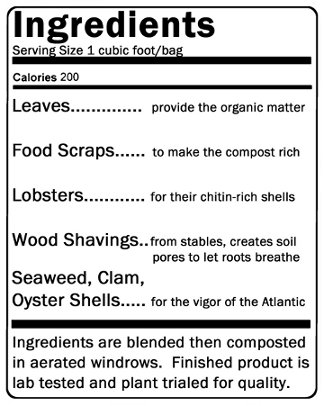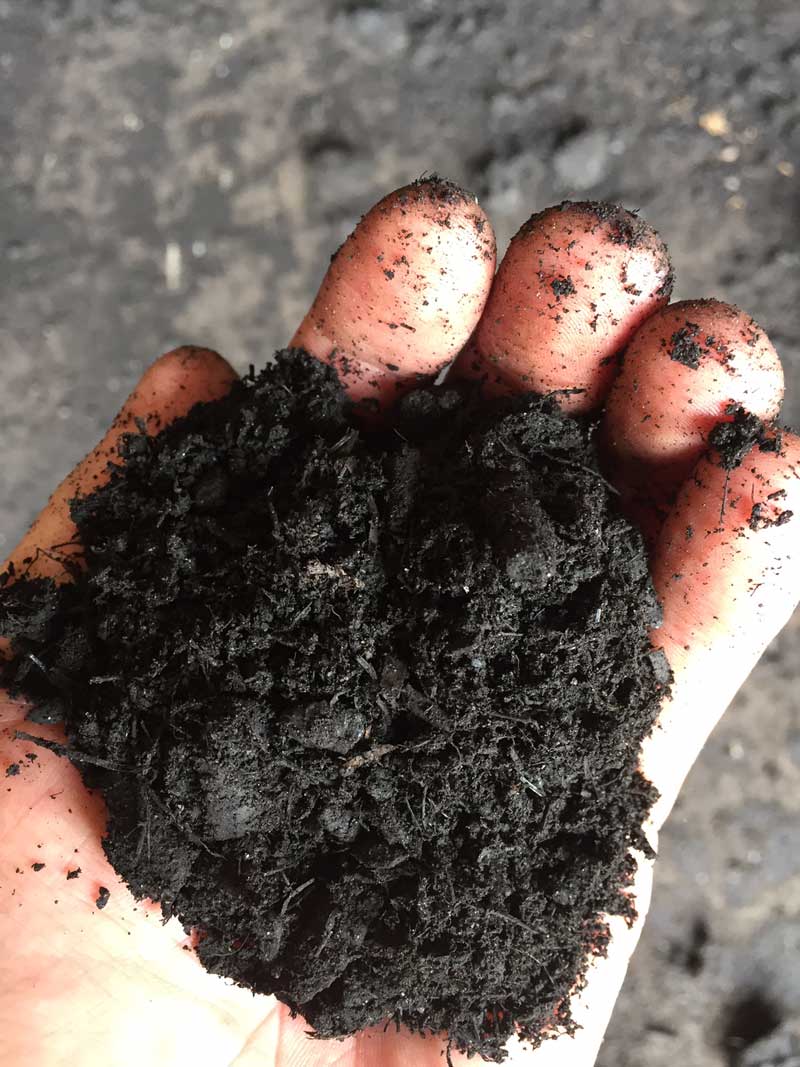The Dirt on Compost
(Or, How You Learned to Stop Worrying and Love the Humus)
What is Compost?
Most gardeners know the basics - compost is the black, soft, nutrient-rich end result of decayed organic materials, typically a combination of dead leaves, grass clippings, and vegetable scraps. It smells sweet and earthy, and is referred to by many as “black gold” for the value it brings to your garden.
Something that is often overlooked, especially by people who are using it for the first time, is the simple fact that compost is alive. It is full of beneficial microorganisms and fungi that digest and break down the organic matter through continuous chemical processes, creating the nutrients that feed our vegetables, flowers, and lawns.
These microorganisms leave their mark through the smell, look, and texture of the compost. Compost tends to steam on cold mornings - this is a sign it’s “cooking”, because the microbes are hard at work. Occasionally, you may even see thin white strands woven through the compost chunks. This is the mycelium, or root network, of the fungi that feed off the decaying matter. It’s not moldy or bad, it’s simply helping to do what compost does best - decompose.
You don’t have to be a chemist or a microbiologist to understand the basics and benefits of compost. Read on for the run-down on the compost we carry, and what to expect from the product you take home.
Which Compost should I choose?

The co-op sells three different composts to choose from: Coast of Maine Lobster Compost, Black Earth Compost, and our singular bulk option, Brick Ends Organic Compost, sold by the yard.
All are quality products suitable for lawn, yard, and garden applications, but the only product that is certified by both OMRI (Organic Materials Review Institute) and the USDA (US Department of Agriculture) is Brick Ends Compost from Brick Ends Farm, based in Hamilton, MA. If you are committed to organic gardening in every aspect, Brick Ends Compost is the product for you. For a full analysis of Brick Ends Compost, visit this document.
Black Earth Compost is another local compost product manufactured in a few different locations in Massachusetts, which uses organic materials collected curbside from homes through their composting service. It’s rich in humus (plant matter fibers) and contains no weed seeds. Here is Black Earth’s Nutrient Lab Tests and Quality Analysis.
Coast of Maine Quoddy Blend Lobster Compost is our second bagged compost option. It is manufactured in Maine alongside other quality Coast of Maine Brand products. It contains shellfish meal, aged bark, and peat moss for an all-purpose garden blend. It is OMRI-listed as well.
How Much Compost Do I need? What if I buy too much?
Compost is versatile enough to have a place in almost every gardening project, but there is such a thing as too much or too little. Make sure you’re calculating the right amount for your space, and applying it properly, for best results.
For container or raised bed gardens, compost may be applied as both a top dressing over the soil layer, mixed in with the soil, or added to an existing raised bed, up to about 4 inches deep. Containers may be filled with a 50:50 ratio of soil to compost. Compost is not ideal for planting in by itself, because it doesn't contain many essential minerals that plants require for growth. Compost also isn’t a good fertilizer on its own, despite being rich in nutrients. It’s a soil amendment, not a replacement.
If you’re seeding or patching your lawn, you’ll want up to a ½ inch layer of compost over your topsoil, fully covering the area you’re seeding. Gently rake the grass seed into the compost, not burying it. Compost dries out fairly quickly and must be kept consistently moist for the first two weeks of germination.

Of course, compost may also be used as a side dressing for your garden beds, mixed into seed starting mix, or even used as mulch! You can also jumpstart your own compost pile with a bag of good quality, ready-made compost. Adding vegetable peels, grass clippings, and other organic debris will provide fresh nutrients for the microbes and fungi in the compost, continuing their life cycle. See our post, Composting In the Fall, for more information on DIY Compost.
Basically, because it’s so easy to find applications for compost, you shouldn’t worry about having too much if you’ve got a lot of garden projects going on throughout the year. The only thing you need to be wary of if you’ve bought a large quantity of compost is letting it sit, untouched, for more than a week undisturbed.
What if I want to buy some compost and save it for later in the season? Does it go bad?
If you’re unable to put your compost to immediate use, do both of these things to ensure it stays healthy and rich:
- Aerate it (give it a stir, let those microorganisms breathe!)
- Water it (help those microorganisms stay hydrated!)
As mentioned before, compost is a living substance. Whether it’s sitting in a bag or heaped up on a tarp in your driveway, it’s still active (even if it doesn't seem like it’s doing much). It’s a miniature ecosystem with lots of action on a microscopic scale, and requires some basic maintenance to stay alive and in good shape.
If you leave your compost alone for too long, it’ll lose much of the nutrients that made it useful in the first place. Standing compost must be turned and kept moist on a regular basis. Turning (mixing and stirring it around) provides oxygen to the aerobic microbes working hard to eat all the dead matter and turn it into nutrients. If there isn’t enough air, the good microbes and fungi die off, and with them go all the nutrients.
If your compost pile dries out, you’ll see a similar issue where the beneficial microbes and fungi die off. The compost will lose its nice chunky brownie texture, and may even appear dusty or ashy. Water your compost if it starts to get dry and crumbly, and keep a tarp over most of it to prevent the sun from baking it dry. The ideal compost texture should be similar to a wrung-out sponge.
It’s normal to see some fuzzy white strings on your compost, that’s the helpful fungi at work. It’s also normal to see occasional chunks of wood or the odd lobster shell, maybe a family of worms, even a mushroom sprouting from the compost!
It’s not normal to see trash or weeds, tons of flies, or to smell anything terribly rotten. If you’re dealing with anything that clearly doesn't belong, please let us know, but above all, remember: compost is a living, wonderful ecosystem. Let it do its thing.
Further Reading:
Black Earth Compost - About Our Compost
Black Earth Compost - How To Use Compost and Soil Blends
Brick Ends Farm - About Our Compost
Coast Of Maine - How Our Compost Ingredients Assist In Growing Healthy Plants
Coast Of Maine - How We Make Lobster Compost
Cornell Composting - The Science and Engineering of Composting
Gardening Know-How - What Is Actinomycetes: Learn About Fungus Growing On Manure And Compost


